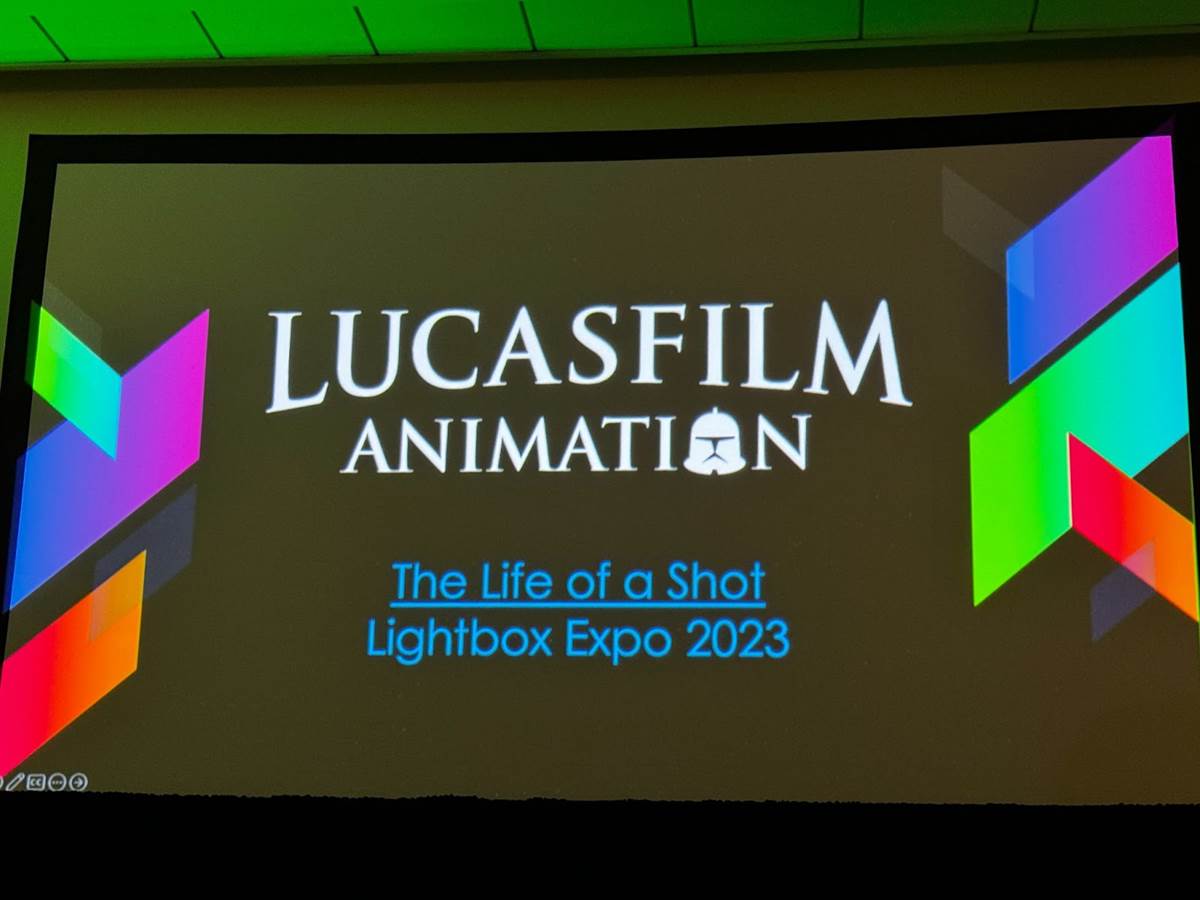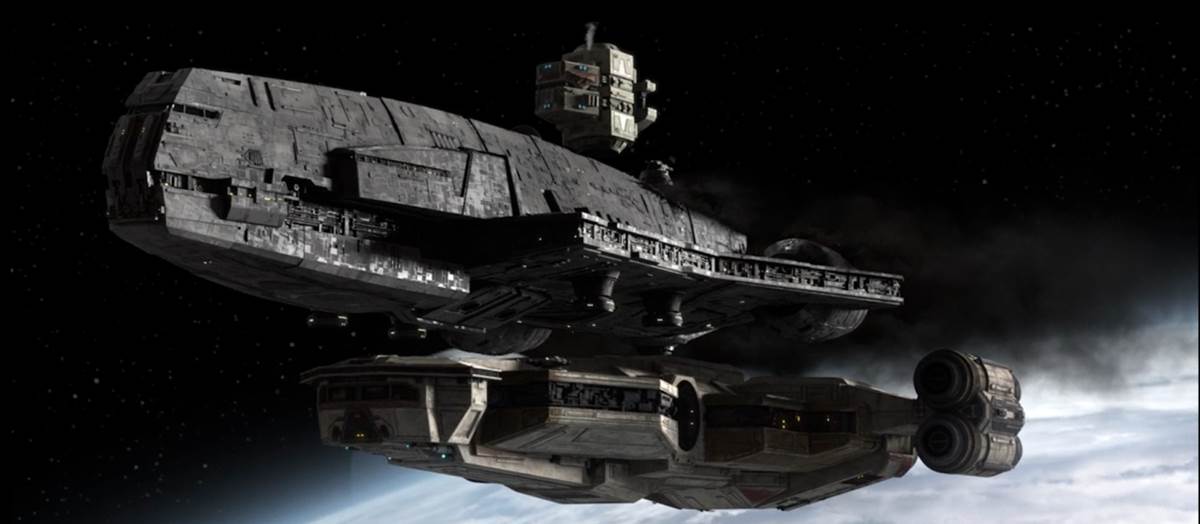LightBox Expo Recap: “The Life of a Shot Within the Star Wars Universe” – The Bad Batch Season 2, Episode 14 – “Tipping Point”
Star Wars fans are known for getting in the weeds of their favorite elements of a galaxy far, far away, and it doesn’t get more in the weeds than the LightBox Expo panel “The Life of a Shot Within the Star Wars Universe." Taking a few seconds from an episode of Star Wars: The Bad Batch, seven panel participants dove deep into the hard work that went into bringing that moment to life. As a preface, this panel used animation industry terminology that is more explained in a separate Lucasfilm Animation panel recap, “Your Career Path at Lucasfilm Animation."
The shot is from “Tipping Point," the 14th episode of Season 2. It lasts from 2:43 to 3:40, just under a minute of screen time, and yet it took countless hours to bring it to the screen. Art Director Andre Kirk attends the story kickoff sessions and begins his process by looking at the assets needed to tell the story. Do any of them already exist? Does the script call for any changes to current assets? Or does something need to be created from scratch? The scene called for three ships, the first being an Imperial Gozanti-class cruiser, which was previously used in Star Wars: Rebels, meaning a model existed that could be updated for the episode. But what was new was another starship, the Remora, piloted by Gregor and Echo, that had a pod called a Leech that could detach to help break into the Imperial ship. That’s a design conceit that could be handled in a variety of ways, so part of the challenge was designing something that felt like a natural fit for this world.
As the Director of Digital Assets, Paul Zinnes has to take designs created by Andre Kirk and his team and turn them into a 3D model. In addition to modifying an Imperial Gozanti-class cruiser, they had to create the Remora, Leech, plus nine characters, blasters, and three interiors, including a cockpit, bridge, and hallways. Displaying the assets separately in one display for scale, Paul revealed a Lucasfilm Animation secret - most of the interiors don’t actually fit inside the ships. They also have to create proxy, model, and final versions of each design for various parts of the production pipeline to use.
Supervising Director Brad Rau, who is part of the story kickoff meetings, leads a team that creates a previs version of each episode. Once the proxy versions of assets are ready, they become part of the previs process that becomes an aid for the animators. His role also creates a temporary dialogue track for the show, and he’s often part of the final recording process. He shared a familiar anecdote about Dee Bradley Baker, who provides the voice of all of the clones, who is so skilled at switching between characters that he can usually do it without needing to pause.
Animation Director Keith Kellogg leads a team at Lucasfilm Animation responsible for animation of about a third of each episode, while also overseeing the footage that comes back from international studio CGCG. He’s usually juggling three episodes at a time, so while working on “Tipping Point," he was also overseeing the Season 2 finale, reviewing between 60 and 100 shots per day. Keith demonstrated some of the animation controls for a Stormtrooper in Season 2, which have 120 controls in their body and 60 in their face. He also showcased how the rigs were improved from Season 1 to improve dynamic poses with armor on.
Joel Aron has been at Lucasfilm for 33 years, starting at Industrial Light and Magic before moving to Lucasfilm Animation in 2007 as the Director of Cinematography and Lighting (he also presented during a panel about the making of Star Wars: Visions - “The Pit"). He talked about the lighting of this shot, which is intentionally very dark, and how the look of The Bad Batch strives to emulate the cameras that filmed A New Hope. The post-production lighting goes fast, and the level of control can be specific to an individual character. Artistically, every shot of the show is lit like a Rembrandt painting with lots of light and shadow.
Pipeline Supervisor Akanksha Sahu is an expert on all of the tools that are used to create each episode of The Bad Batch. One of the biggest values she provides to the team is a database with the most up-to-date version of each shot. From previs and rough animation to approved animation and final lighting, she’s with these shots from start to finish, including post-production foley and scoring. She’s one of the first to touch each shot, in addition to one of the last.
And remember, all of this work went into about a minute of a full episode. Like Keith Kellogg said, these individuals are typically juggling multiple shots at a time, all in an effort to deliver the best show possible. Star Wars: The Bad Batch is now in production on Season 3, coming next year to Disney+.
Click here for more coverage from LightBox Expo.




